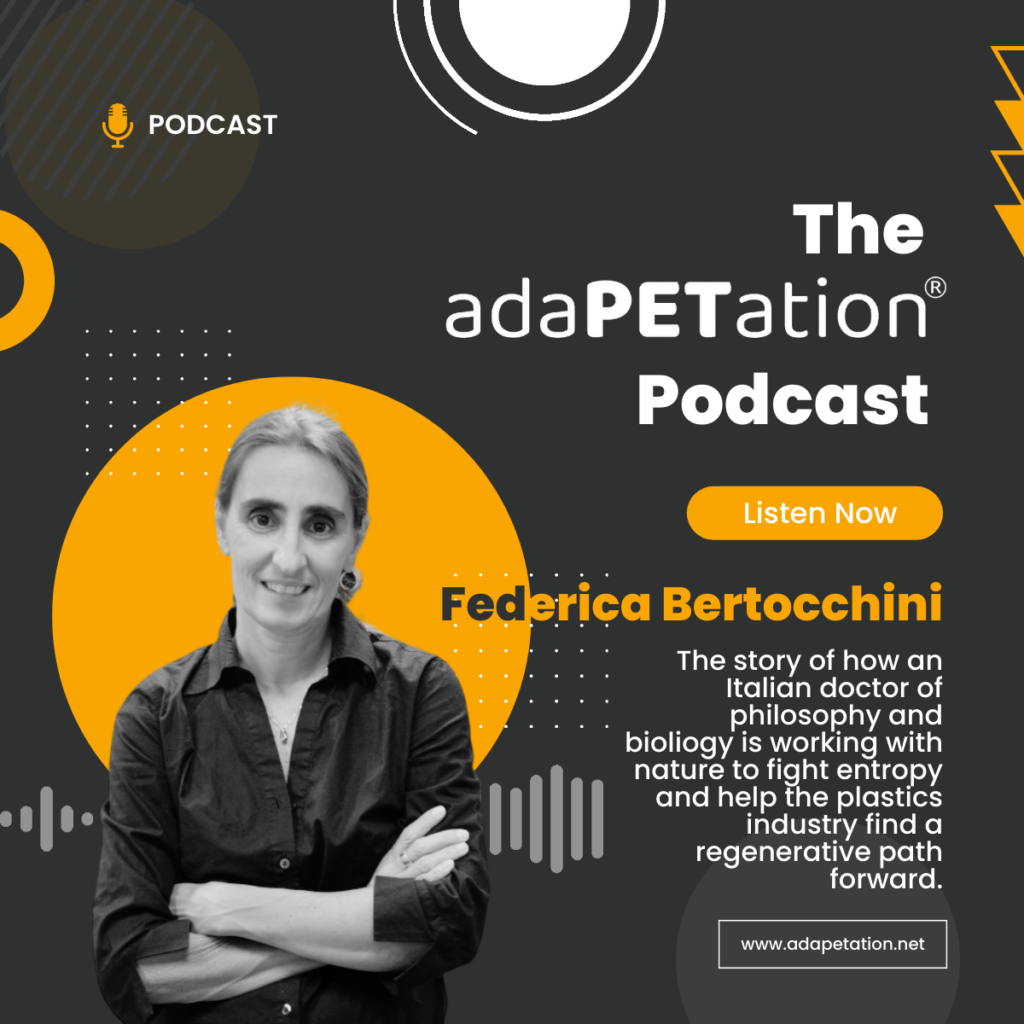
A ground-breaking discovery of plastic-degrading enzymes in waxworms reveals how nature-inspired solutions could revolutionize our approach to plastic waste. This accidental finding offers insights into creating regenerative pathways for even our most persistent synthetic materials.

In a laboratory in France, Dr. Federica Bertocchini is studying how a common pest might help solve one of humanity’s most pressing environmental challenges. What began as an accidental discovery—waxworms creating holes in plastic bags—has evolved into groundbreaking research that could fundamentally change our approach to plastic waste management.
Nature’s unexpected solution
Dr. Bertocchini’s journey began with a simple observation. As a molecular biologist with a hobby of beekeeping, she noticed that waxworms—larvae that infest beehives—were eating through the plastic bags she had placed them in. “We analysed plastic around the holes and then we did some other studies and we found out this oxidation,” she explains. “I mean, there is a chemical modification of the plastic.”
This chance observation led to years of meticulous research, ultimately identifying enzymes in the waxworm’s saliva capable of breaking down polyethylene—one of the most commonly used and environmentally persistent plastics. The discovery represents a profound example of how nature, even inadvertently, might offer solutions to problems of our own creation.
Beyond the waxworm: the enzymatic frontier
Enzymatic degradation of plastics represents a growing field of research with enormous potential. Similar approaches have shown promise with polyethylene terephthalate (PET), commonly used in food packaging and beverage bottles. These developments suggest that nature-based solutions could provide pathways for plastic to be broken down and reintegrated into natural cycles.
“The PET world is more advanced compared to polyolefin because there are several enzymes,” notes Dr. Bertocchini. “I think that the front, the front runner and maybe they’re managing there.”
The fundamental principle behind enzymatic degradation is elegant in its simplicity: using biological catalysts to accelerate the breakdown of plastic polymers into their constituent parts. What normally takes decades or centuries in the environment can potentially be accomplished in hours or days with the right enzymatic formulation.
The science of breaking bonds
At its core, enzymatic degradation of plastic involves breaking the chemical bonds that give polymers their strength and durability. For polyethylene, this means targeting the carbon-carbon bonds in the polymer backbone—a particularly challenging task given the material’s resistance to degradation.
Dr Bertocchini’s team has identified enzymes that catalyze oxidation reactions, effectively attaching oxygen atoms to the polymer chain and creating weak points where the material can break down. “Oxidation means that these molecules act in a way that oxygen from the environment attaches to the molecule,” she explains. “And as a consequence, the molecule is broken down.”
This initial breakdown is critical, as it represents the rate-limiting step in plastic degradation. Once the polymer chains are fragmented, they become more accessible to further degradation processes, potentially leading to complete mineralization or conversion to useful products.
From laboratory to real-world application
Transitioning from laboratory success to practical application presents significant challenges. Dr. Bertocchini candidly addresses the gap between proof of concept and industrial implementation: “When you have this little tiny protein that we applied in very small amounts on a plastic bag, we see this effect. But if you think of the tons of plastics we produce every year and the tons of residues that accumulate, you see, well, it’s impossible.”
Scaling enzymatic solutions requires addressing several key factors:
- Enzyme Production: Developing cost-effective methods to produce enzymes at industrial scale
- Stability and Efficiency: Engineering enzymes to work effectively under various environmental conditions
- Process Integration: Creating systems that can handle diverse waste streams
- End Product Management: Developing markets and uses for the breakdown products
Each of these challenges requires significant investment in research and development, as well as collaboration between scientific institutions and industry partners.
Complementary approaches
Rather than viewing enzymatic degradation as a silver-bullet solution, Dr. Bertocchini emphasises the importance of complementary approaches. “I never envisioned this only in my biology. No, it might be biology together with chemical, together with recycling, because one solution alone…right now the amount we produce is huge and the predictions are scary.”
This integrative perspective recognises that different plastic waste streams may require different treatment approaches. High-value, easily sorted materials might be best handled through mechanical recycling, while mixed or contaminated plastics could be candidates for enzymatic or chemical processes.
Looking forward: a regenerative vision
What makes enzymatic approaches particularly appealing from a regenerative perspective is their potential to create circular material flows. Unlike incineration or landfilling, which represent dead ends for plastic materials, enzymatic degradation could theoretically return plastic components to useful forms.
“The ones we have so far, we know they are compounds used in the chemical industry, solvents or molecules used to make some other plastic, for example,” Dr. Bertocchini notes regarding the breakdown products from their enzymatic process.
This possibility aligns with regenerative principles—mimicking nature’s “waste equals food” paradigm where outputs from one process become inputs for another. Just as fallen leaves decompose to nourish new growth, plastic polymers could be broken down to create new materials or products.
Challenges and opportunities
The path forward is not without significant obstacles. Funding constraints, competitive rather than collaborative research environments, and industry resistance to new approaches all slow progress. As Dr. Bertocchini shares from her experience: “Can you go cheaper than burning? That’s what I was asked.”
Yet these challenges also represent opportunities for transformation. By realigning incentives, fostering collaboration, and recognising the true cost of plastic pollution, we can create conditions for enzymatic and other regenerative approaches to flourish.
The waxworm’s unexpected ability to degrade plastic represents more than a scientific curiosity—it offers a glimpse of how we might fundamentally rethink our relationship with materials. By looking to nature not just for inspiration but for practical solutions, we move closer to a truly regenerative approach to plastic—one where end-of-life isn’t the end at all, but rather a transition to new forms and functions.
As we continue developing these promising technologies, the most important lesson may be the one Dr. Bertocchini shares from her research journey: “Observing nature always gives you some answers that you won’t expect.”
To hear more about her insights and ideas about the importance of nature in the future of PET and plastic, check out the full conversation on the adaPETation® Podcast.
JOIN THE CONVERSATION
The future of plastics is being redefined, and you can be a part of it. Listen to the full podcast with Dr Federica Bertocchini to delve deep into the regenerative path of PET.
Your support can usher in a new era where plastic, once the problem, becomes an integral part of the solution.
Share it
Useful Links
THE HISTORY OF PLASTIC
Throughout the history of plastic, PET has been crucial in keeping food fresh with lightweight and durable packaging solutions that have helped reduce food waste for almost a century. Learn all about the invention of plastic and the important role it has played feeding people and saving the lives of humans and elephants in the adaPETation® timeline of the history of plastic.





